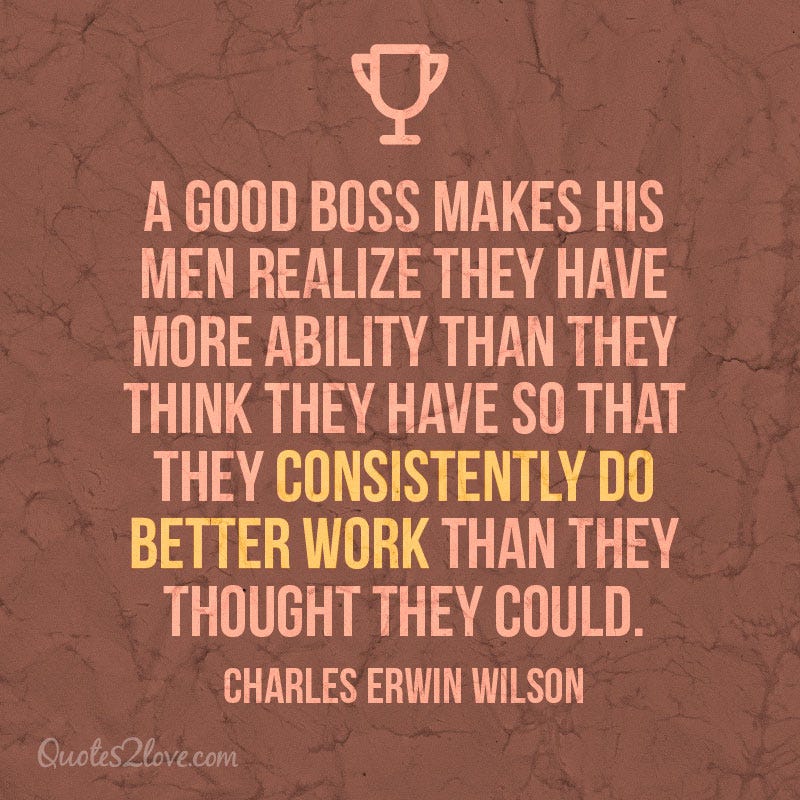HOW TO BE A GOOD BOSS
When you’re the boss, you want to do your best to effectively run your organization. If you do your job well, then your employees will do their jobs well, too. Whether you’re new to the job or just want to improve your performance, there are several common strategies used by good bosses that you can implement in your workplace.
CREATING A POSITIVE WORKPLACE CULTURE
Have an open door policy. Make yourself available to your employees, and welcome their input. Open door doesn’t mean that your office door is literally always open. Rather, it means that your employees can come to you with any issues or suggestions that they have, and you will be receptive.
If you’re very busy, you can specify times when your employees can filter in or out of your office, or you can make rounds to visit your employees in their workspace.
Respect and value your employees. Every employee in your organization contributes to making your business a success. Acknowledge their contributions and let them know that you see their hard work.
Say, “I don’t say it often enough, but we couldn’t keep this place running without your handwork. Thanks for all you do.”
Motivate your staff to do their best work. Make your office a pleasant place to work by providing good lighting, encouraging a friendly attitude, and allowing employees to bring in a personal touch, such as family photos or a fun poster. Provide your employees with rewards and incentives for good work, such as a pizza party or a monthly certificate.
Set up a bulletin board to post about employee’s achievements. You can also create a section for photos of employees and company events.
Try instituting a casual Friday.
Make a point to celebrate holidays and birthdays.
Stay involved in the day-to-day activities of the office. It’s easy for a boss to become out of touch with the job tasks of lower level employees. This can create resentment from employees whose jobs you don’t understand, and it prevents you from spotting areas that could benefit from change. Instead, make a point to work alongside your employees once a week.
Sit in on a planning meeting.
Join the sales team on the floor.
Spend a few minutes sorting mail in the mailroom.
Try new ways of doing things. Your employees may have ideas about how to make their jobs easier. Listen to them, and try out the ones that seem most likely to lead to success. When you’re open to trying out ideas suggested by your employees, they will see that you value their input, which will make them view you as a good boss.
Say, “I thought about your ideas for streamlining our proposal process, and we’re going to give it a try with this next project.”
SUPPORTING YOUR EMPLOYEES
Assign tasks that help your employees stretch and grow. Challenge your employees, allowing them to try new things that are beyond their current workload. Trust them to get the job done right. For example, allow junior employees to work on committees alongside senior employees.
If you don’t allow your staff to grow, they may seek other opportunities.
Letting employees try new things can lead to innovation. You can also use it as a strategy to increase the number of people on your staff who are able to complete certain tasks.
Help your employees when they’re struggling with a task. It’s normal for people to hit roadblocks, especially if you’re assigning tasks that stretch your employees. If an employee seems to have hit a barrier that they can’t cross, work with them to get the job done.
Don’t take over for your employee. Instead, provide them with assistance, whether it’s from you or another employee who can mentor them.
Provide your employees with the training they need. You can provide training sessions, guest speakers, or training videos. If you have the resources, you could even send your employees to a conference or seminar.
Monitor your employees to see if they are struggling to meet their work demands, especially if you work in a rapidly changing industry.
Delegate responsibility to avoid micromanaging. Delegating helps you get more work done and creates a well-trained workforce. Once a task has been assigned, trust that employee to complete it without you hovering over them.
For example, allow problems to work their way up a hierarchical chain before they reach you. This will empower your employees to make more of the day-to-day decisions.
Stepping in to help an employee who truly needs direction is not the same as micromanaging.
Support the career goals of your employees. Good bosses remember that their employees aren’t just cogs in a machine. They have goals, too. Know what your employees are working toward, and help them get there by assigning tasks and trainings that best suit those goals while also supporting your organization. Invest in your employees, and they’ll invest in you.
Supporting your employee’s goals can help you retain your best employees rather than see them walk away to another company.





Comments
Post a Comment